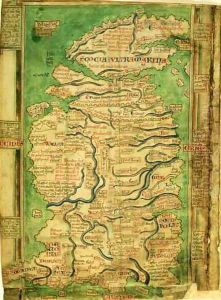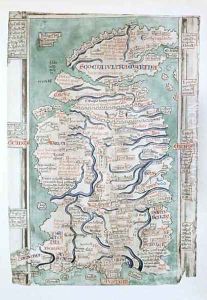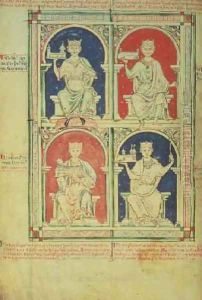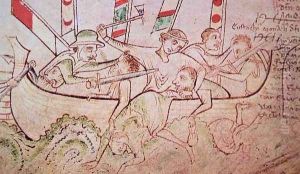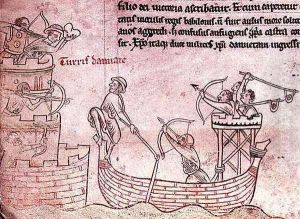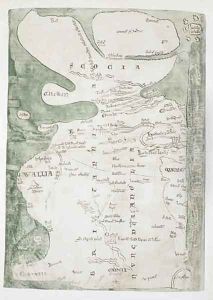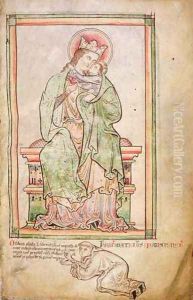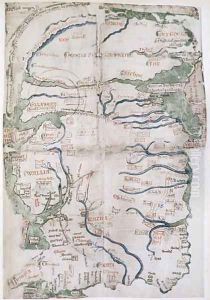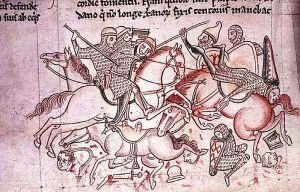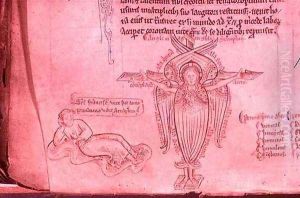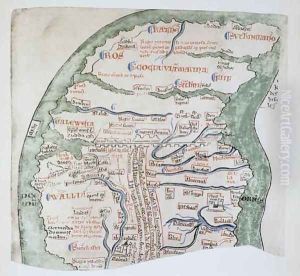Matthew Paris Paintings
Matthew Paris was an English Benedictine monk, historian, writer, and illustrator who lived during the 13th century. He was born around 1200 and became a monk at St Albans Abbey in Hertfordshire, England, where he spent much of his life. Paris is best known for his written works, particularly his chronicles of English history, which include the 'Chronica Majora', 'Flores Historiarum', and the 'Vitae duorum Offarum', the latter of which focuses on the lives of the two Offas, kings of Mercia.
His works are considered significant historical sources for the period, as they provide detailed accounts of the reigns of various English kings, especially Henry III, and include information about political events, the Crusades, and the lives of saints, among other topics. Paris was also known for his illustrations, maps, and marginalia, which often accompanied his texts.
Matthew Paris was a contemporary of Roger of Wendover, another historian at St Albans, and he continued Wendover's chronicles after his death. Paris' writings are distinguished by his critical approach to his sources and his personal observations, which give readers insights into the politics and culture of medieval England.
In addition to historical texts, Paris also engaged in creating illuminated manuscripts and other artistic works, which are notable for their detail and vibrancy. His illustrations often reflected his interests in heraldry and genealogy, and his maps, such as the famous 'Mappa Mundi', are among the earliest known efforts to provide a graphical representation of the known world.
Matthew Paris died in 1259, and his legacy as a historian and artist has been recognized for its contribution to our understanding of medieval England and Europe. His works continue to be studied by historians and art historians alike for their rich blend of narrative, illustration, and commentary.
